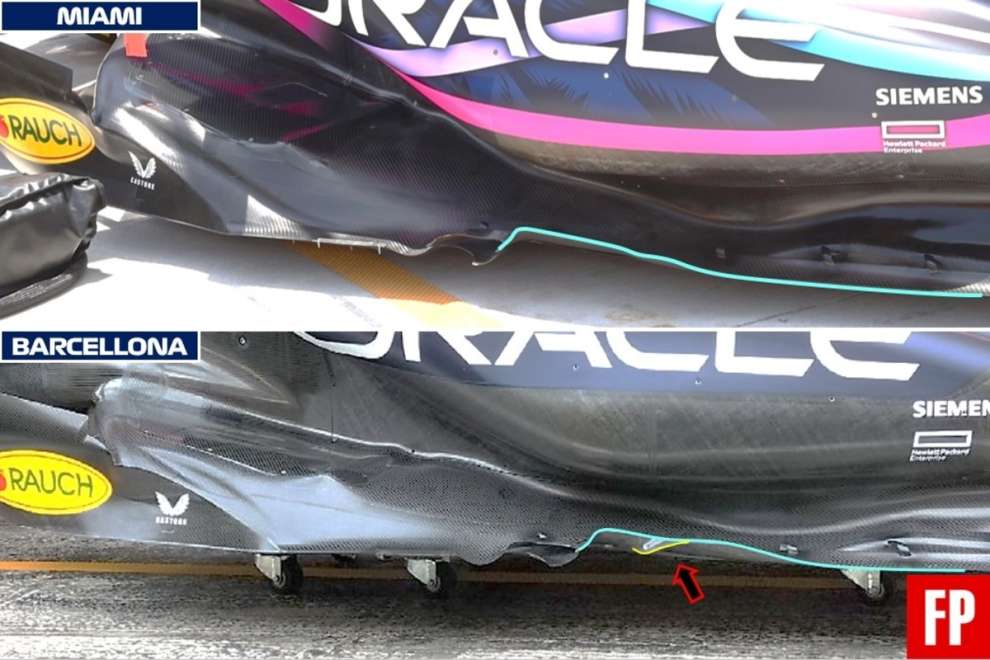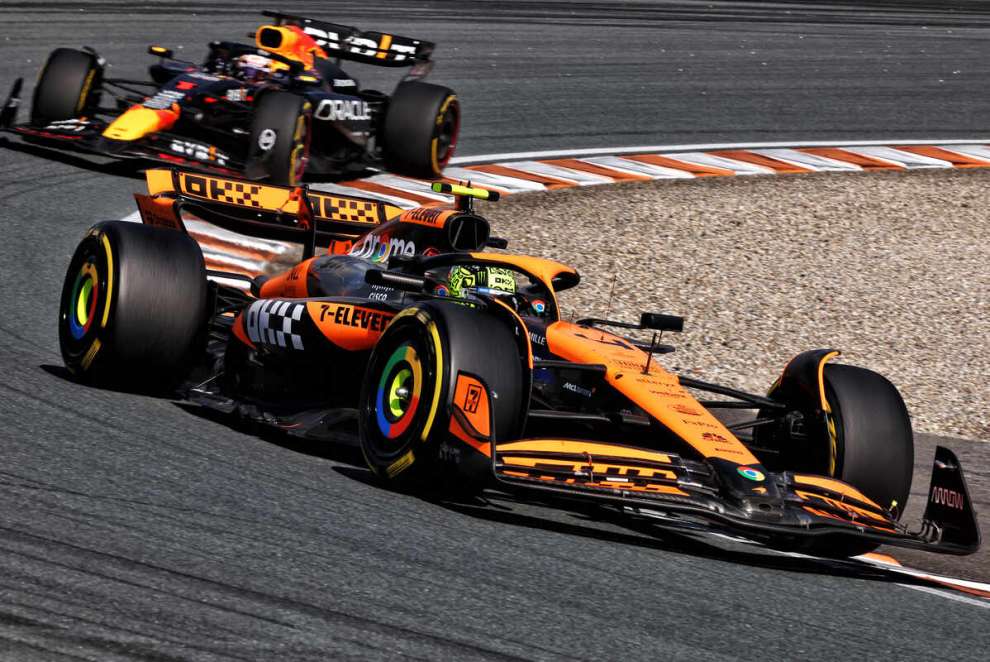By Carlo Platella
From the domination of the beginning of the season, Red Bull is now forced to chase, both in the constructors’ standings and on the track, where for months McLaren has appeared superior in all conditions. The world champions recognize that they are struggling with balance and driveability problems, which have only recently exploded, but have slowly been introduced with the development starting from the bottom brought to the 2023 Spanish Grand Prix. The current situation is the fruit of other decisions too taken in the last year, between unfortunate times and development objectives.
The change at the end of 2023
The RB20 represents the natural evolution of the 2023 car, inheriting the same basic concept in terms of underbody aerodynamics, suspension and driving character. “In terms of balance the car is very similar to last year’s”Perez’s comment on the first race of 2024. “When I first drove it, it didn’t feel like a completely different car,” the echo of Verstappen. At the same time Red Bull is aware that the RB19 had now reached saturation point as development potential. In order not to risk being caught up by the competition, the 2024 car is born visually different from its progenitor.
If the bottom is an evolution of the same starting concept, the bodywork of the RB20 instead It constitutes a revolution. The intention is to exploit the aerodynamic interaction between the underbody and the new sidepods-bonnet package to extract further performance, more than was possible with the RB19. The body lines, in fact, impact the flow of air channeled under the car and above all shield the underbody from the turbulence of the front wheels. Finally, the deep excavation under the sides allows the flows to be channeled into the gearbox area with greater residual energy, favoring the extraction of air from the diffuser to the advantage of the load released by the underbody.
The big changes undoubtedly ensure Red Bull a significant performance leap. In the first two qualifying sessions of the year they about 6 tenths gained in qualifyingin line with Ferrari and Mercedes, a remarkable growth for the heir to the best car of 2023. Six months later, the question is now whether the RB20’s bodywork itself has contributed to the deterioration of its balance and handling. Beyond this question, however, there are other effects that Red Bull is suffering from the revolutionary 2024 bodywork.
The timing
The major changes planned for the new single-seater require the early interruption of the development of the 2023 car, which in fact stops at the Singapore Grand Prix. Red Bull thus deprives itself of the opportunity to bring new updates and to verify any side effects on the track, not detectable by the wind tunnel. The developments brought from Barcelona onwards have already begun to narrow the operating window of the RB19, making it more performing but at the same time more unstable. However, these are effects that Verstappen is still able to manage, even meeting his driving preferences.

It is only by continuing the same development philosophy in 2024 that the problems become increasingly unmanageable, until they finally explode with the Silverstone bottom. Stopping the RB19 updates early It therefore prevents the problem from being identified in advancepotentially as early as the end of 2023. McLaren also contributes to this late awareness, by postponing the updates initially planned for the car’s launch to Miami in 2024. The Woking team thus relieves the pressure on Red Bull and Verstappen for another two months, who, without having to push the RB20 to the max, do not come to terms with its driveability and set-up limits.
Expensive reliability
Diverting attention early to the ambitious 2024 project therefore prevents the world champions from taking note of the first balance problems that were starting to appear on the RB19. At the same time, the bodywork of the RB20 needs an extreme packing of the components under the skinpower unit and cooling system above all. The compactness is even more pushed than it would be necessary, since Red Bull wants to keep some margin for intervention for any changes in view of 2025.

The world champions soon paid for the RB20’s tapered lines, which raised concerns about internal cooling. This made it necessary intervene to preserve reliabilitydeveloping a new bonnet and cooling scheme specifically for slower tracks, which debuts in Budapest. The overheating problems also raise questions about the package at Suzuka, where the Red Bulls get two more air intakes, leading to the question of whether those too are not dictated by the same problems.
Reliability Complications they end up taking away resources for development. It is true that the analysis of the cooling system does not consume hours from those that can be spent in the wind tunnel, but studying the effect of each new body on the external aerodynamics does. Red Bull thus finds itself at the end of the summer with a car afflicted by balance and driveability problems, but with few time and economic resources to study a solution.

Choosing the objectives
Then there is a problem that is external to the character of the RB20. Compared to the previous car, in fact, the Red Bull 2024 grows above all in slow corners, improving less than expected in fast changes of direction. By the Milton Keynes technicians’ own admission, the guideline for the 2024 project is to lower the lap time through greater load consistency in the aerodynamic map, that is, by varying postures, heights from the ground, steering angles and yaw. The maximum peak of aerodynamic load instead remains similar to that of the RB19.
The competitiveness in the maximum aerodynamic load configuration was already there one of the least convincing areas of the 2023 single-seater. “Probably we would like to have more maximum load, but you can’t have everything”Verstappen commented last season. However, even with the 2024 project, Red Bull is not investing much to fill this gap. The result is a growing gap from McLaren on high-downforce tracks, including Budapest, Zandvoort and Singapore, where the rival car appears particularly at ease.

Towards Austin
A series of factors are therefore contributing to the current state of crisis of the world champions. The development objectives of the RB20 fail to fill one of its biggest gaps, namely the performance in high-downforce configuration. The early interruption of the 2023 updates instead hides the balance problems that were already beginning to manifest themselves. Finally, the extreme bodywork of the 2024 car jeopardises its reliability, absorbing development resources that are at the expense of those used to correct the other problems of the project. According to Christian Horner, the aerodynamic and set-up changes made in September they are going in the right direction. Only the Austin race, however, will be able to confirm or deny this statement and with it Max Verstappen’s world championship hopes.
#Analysis #Red #Bull #stages #crisis #hood #wrong #choices #timing